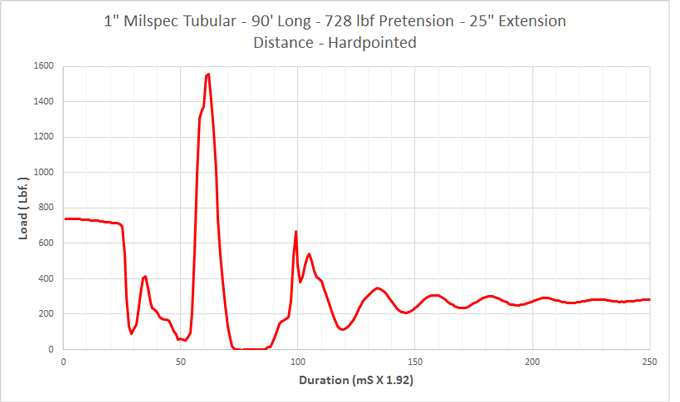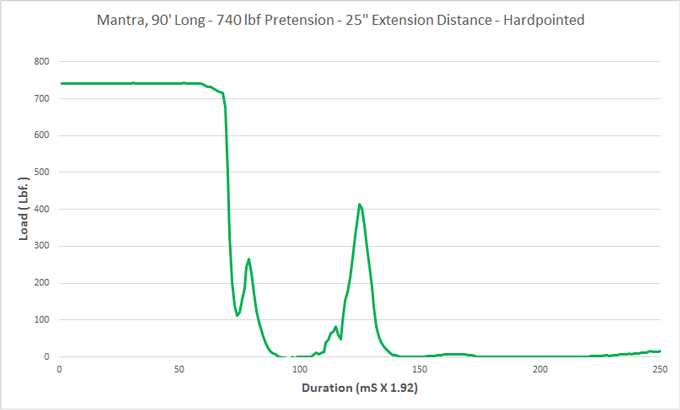You have no items in your shopping cart.
0
You have no items in your shopping cart.
Over the past few months I have been slowly studying the effects of shockloading as they pertain to highline anchors. I have been examining the effects of anchor extension by simulating a bolt failure.
Unfortunately, this study is very incomplete as I broke my leg while I was in the middle of my study, and a large amount of my research was lost because of a defective hard drive. Accordingly, I intend to conduct an entirely new study once my leg heals. Nevertheless, using the data that was not lost I would like to share what I have learned so far.
I intended to study the effects of shockloading on two fronts: in a longline scenario and in a highline scenario. This post only references the testing I conducted on a longline as I broke my leg before I could reach the second phase of the study. In a longline scenario, I stretched a line across a field, built a sliding-x anchor, tensioned the sample to approximately 728 lbf (unless otherwise mentioned), and I used a quick release mechanism to simulate an anchor leg failure.
The idea is that when an anchor leg fails, the slackline will aggressively recoil like a tensioned spring, which may cause a shockload on the anchor. The following photos illustrate an approximate representation of the testing platform I used to collect the data presented in this post.


Quickly I learned that the recoiling line will subject a large amount of force to the remaining anchor leg if residual tension remains in the line after the anchor extends. In other words, if the line extends so much that the line loses all of its tension, little shockload occurs. However, if the anchor does not extend to the point that the anchor loses all of its tension, a shockload will occur. Last, the following results only simulate the recoil of the line, they do not include a highliner falling on the line.
Type-18, 225’, 728 lbf pretension (+/- 10 lbf), 26” extension distance, hardpointed:
Type-18, 225’, 728 lbf pretension (+/-10 lbf), 26” extension distance, softpointed:
Milspec Tubular, 90’, 728 lbf pretension (+/-10 lbf), 25” extension distance, hardpointed:
Mantra MKII (polyester), 90' long , 740 lbf pretension (+/-10 lbf) , 25" extension distance , hardpointed



For a number of reasons, the load values expressed in this post are lower than what would be conceivably achieved in a real highline shockloading scenario. For one, I did not include a highliner falling on the line. In addition, I used a more-dynamic 1” piece of webbing to build the anchor as opposed to a less-dynamic round sling, which is more representative of what a typical highliner would use.
If the highline extends so much that the line loses all of its pretension, the shockload will be far lower than if some pretension still exists on the line, as is shown in the case of the Mantra test. Although not included in this post, I found that, generally speaking, the higher the pretension on the line once the line extends, the higher the shockload. Accordingly, nylon lines and long highlines pose a particular high risk should the anchor extend, as well as overly tight highlines.
I also determined that shortening the extension distance does not have a large effect on the shockload peak. In one test, I halved the extension distance to 12” and the peak only dropped roughly 15% when compared to an extension distance of 26”. In order for the shockload value to remain within 125% of the initial pretension, the extension distance must be very small (under 1”).
Last, it does not appear that softpointing the line has a large effect on reducing the shockload, although it does have a small effect.
| Product | Price | Quantity | Options | |||||
|---|---|---|---|---|---|---|---|---|
| Features |
| Availability: |
| Price |
| Options |
| Actions |

← Older Post Newer Post →
0 comments